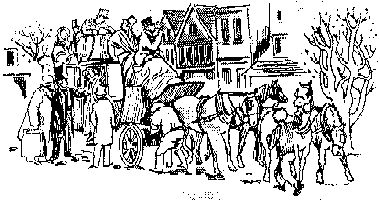![]()
From Roman times to Charles Darwin & the Industrial Revolution
Shrewsbury, the county town of Shropshire, is in the English Midlands close to the Welsh border. It owes its existence to a natural loop (meander) in the river Severn which provided an easily defensible site for early settlers. There are many ruins around Shrewsbury which clearly show it was occupied in Roman times, for example, the headquarters of the Fourteenth Legion, the crack Roman regiment that constructed Watling Street all the way from London, are close by. The first written reference is in a chart er of 901 where it appears as Scobbesbyrig ("Byrig" suggests a fortified settlement). The Doomsday book of 1086 contains a description of Shrewsbury. The town prospered by trading in raw wool and cloth from Wales, although King Henry III found it necessary to order the construction of town walls in 1220 to avert the threat of attack from the Welsh!

In the eighteenth century Shrewsbury became a stop-over for stage coaches travelling from London to Holyhead, providing stabling for over 100 horses every night. The Victorian era brought the railways which destroyed the coaching trade, but provided Shrewsbury with a new role as a major stop on the way Chester and the north. Nowadays, Shrewsbury is a relatively quiet market town whose historic past has left a legacy of beautiful black and white tudor buildings, churches and parks which attract numerous tourists every year.
Charles Darwin was born in Shrewsbury in 1809. His statue now stands outside the public library (originally Shrewsbury School, where he was educated) in honour of his revolutionary work on the "Origin of the Species" (1859). [Picture (72K)]
 The Industrial Revolution
began very close to Shrewsbury. Just a little way further down
river is the town of Ironbridge. The 200 year old bridge
which gives the town its name, was the first in the world to be
cast in iron. The bridge and the museums around the Ironbridge
Gorge are a World Heritage site, and well worth a visit. Don't
miss the Blists Hill Open Air Museum, a 50-acre living
reconstruction of town life at the turn of the century!
The Industrial Revolution
began very close to Shrewsbury. Just a little way further down
river is the town of Ironbridge. The 200 year old bridge
which gives the town its name, was the first in the world to be
cast in iron. The bridge and the museums around the Ironbridge
Gorge are a World Heritage site, and well worth a visit. Don't
miss the Blists Hill Open Air Museum, a 50-acre living
reconstruction of town life at the turn of the century!
While the Ironbridge was the forerunner of such majestic spans as Istanbul's Bosphourous bridge and San Fransisco's Golden Gate bridge, the Ditherington Flax Mill in Shrewsbury is the forebear of the modern skyscraper. It's not much to look at, but it was the world's first iron-framed building! [Picture 33K]
Finally, enjoy a little poetry from A.E. Housman's "A Shropshire Lad." If you wish, you can now find out more about Shrewsbury and Shropshire elsewhere on the web.
© 1995 - David Davenport